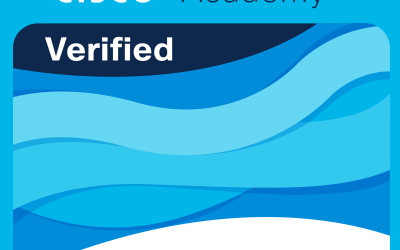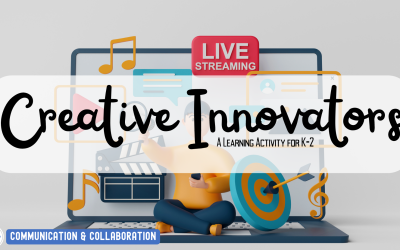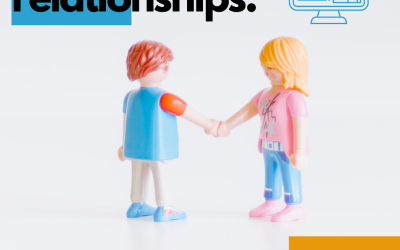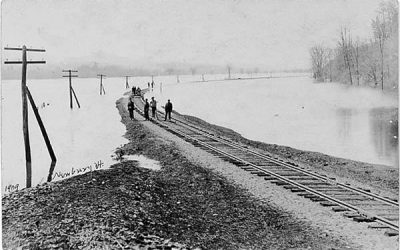Overview
In this activity, learners will be challenged to examine the power of positive and negative words and images in cyberspaces. As learners discuss and create ideas for respectful online conduct, they will discover that words and images DO matter and what we decide to post online cannot be easily erased!
NB Curricular Connections
English Language Arts
- Strand: Reading – Big Idea: Reading Comprehension – Skill Descriptor: Construct meaning from oral stories, read-alouds, and text.
Explore Your World
- Strand: Well-Being – Big Idea: Emotional Health and Positive Identities
- Strand: Play and Playfulness – Big Idea: Play and Inquiry
- Strand: Diversity and Social Responsibility – Big Idea: Democratic Practices – Skill Descriptor: Act as responsible and responsive community members.
What You’ll Need
- Book – Troll Stinks (by: Jeanne Willis – available on Sora)
- Cyber Word Traces Printable (see attached PDF)
- Pencils
- Popsicle Sticks (1 per student)
- Billy Goats Puppet Faces (see attached PDF)
- Clear tape or glue stick
- Permanent Markers (1 per student)
- 1 Recycled Paper per student
- Chart Paper
- Marker for Chart Paper
Instructions
TELEPHONE: Have learners sit in a circle in a common meeting area and explain that you have heard some fascinating things about your specific people in the room that you would like to share with everyone. Instead of just announcing the news, you will tell a student who will tell the student beside them and so on, until the last student tells everyone what news it is! See if it matches the original message. (It might be useful to show learners how to cup their hands around a peer’s ear and let students know that they can only repeat it twice before the student must guess what was told to them and continue.)
Fill in the blanks with learners’ names (that wouldn’t mind being used as an example):
|
______________ loves animals! _______ has 7 cats, 4 dogs, 2 bunnies, 3 hamsters, and 18 pet worms. |
|
_____________ climbed the highest mountain in New Brunswick, which is called Mount Carleton, with their family in less than 30 minutes! |
|
____________ is a great soccer player! I heard that they scored 23 goals and helped the goalie by stopping 10 balls from scoring in their last game. |
After 3 messages, discuss with learners: Did the message finish the same way that it started? What happened? What changed? Ask the three students that were used in this example if the news that we shared in the circle is true. Ask: Once I speak words, can I take them back? What happens if I’ve told a lot of people something that wasn’t true? Even if I hear good news about one of my friends, should I share it if I’m not sure it’s true? Should what I do in-person be different for how I act online? Should I share information, a photo, or a video of someone else online? Allow learners to share their ideas.
READ ALOUD – Troll Stinks: Gather together. Discuss: Just like our game of Telephone, we are going to read a story where we find two characters sharing news about someone else and believing what someone told them to be true. We’ll have to see if they followed our advice. Read the story. Then, ask learners: How did the Billy Goats act in cyberspace with the phone that they found? Do you think they would have acted the same way without the phone?
ERASE WORDS CHALLENGE: Do a quick inventory check in your classroom with learners helping to point out any device, app, and/or program that could have messages, photos, or videos sent and received. Ask: Have you ever sent messages, photos or videos online? Why did you send the message, photo or video and what device did you use? Give learners a chance to share some examples. Give each learner one printed Cyber Word Traces sheet and read together the messages that the Billy Goats typed and sent to Troll. Give each learner a permanent marker and one piece of recycled paper to put under their Cyber Word Traces Provide enough time for the class to trace the words and messages in permanent marker. Once learners have completed their traces, present the Erase Words Challenge! Learners can choose from the Erase Supplies (erasers, water, hand soap, and laundry soap) and have learners see if they can erase the permanent marker from their papers. Place paper towel at each learners’ spot and only provide a small amount of the liquids for the experiment. Allow learners to share what they discovered (it cannot be erased!). Share the facts: This experiment is exactly what is true online – our words cannot be erased. We must think before we type, comment, like, or post
BILLY GOAT PUPPET LESSONS: Have learners create their own Billy Goat Puppets using the template provided below. Once completed, re-read the book, and pause when the Billy Goats do an action. Have learners show the check-mark goat if they feel like the Billy Goats made a good choice and have students show the x-mark goat for bad choices. For each bad choice, have learners come up with a better solution and record on chart paper titled, How We Will Act Online. [For example: When the Billy Goats find a phone that doesn’t belong to them = bad choice. Better choice – use only devices that I have permission to use.
WRAP-UP: Read over your How We Will Act Online Chart together. Have students print their name on the chart and post this chart near your technology stations in the classroom. Ask: Tell an elbow partner one lesson that you learned today about our cyber words, images, and actions. Choose a few learners to share with the class. Discuss: From what we learned today, what kinds of jobs require a commitment to using the very lessons and tips that we have talked about? (Journalists, YouTube Influencers, Cybersecurity [combatting the negative and untrue], etc.). In reality, positive and truthful online etiquette is important for every single online user.
Reflection Activity
Please see the attached PDF for several choices on how you and your learners can reflect upon today’s activity.
Digital Literacy Framework






